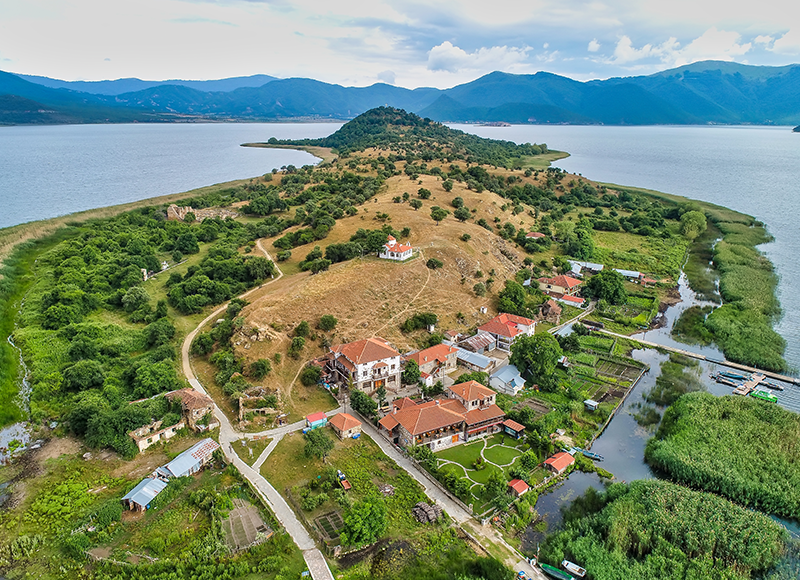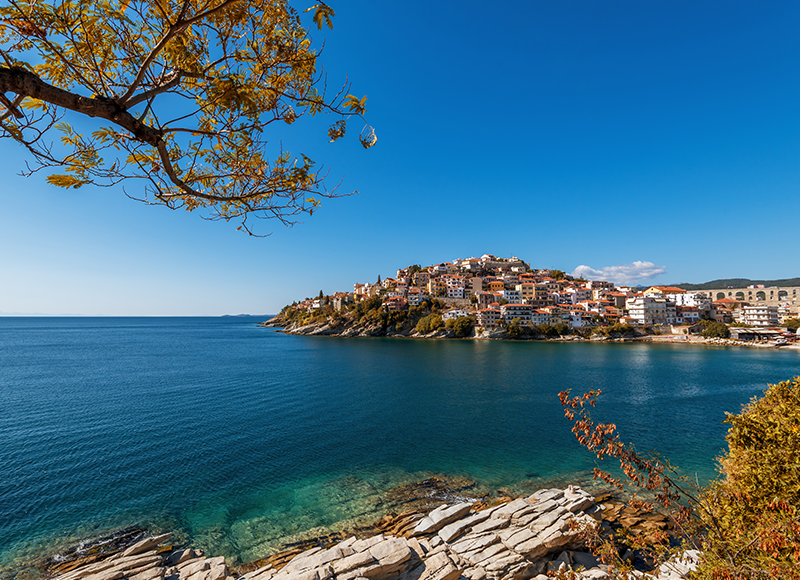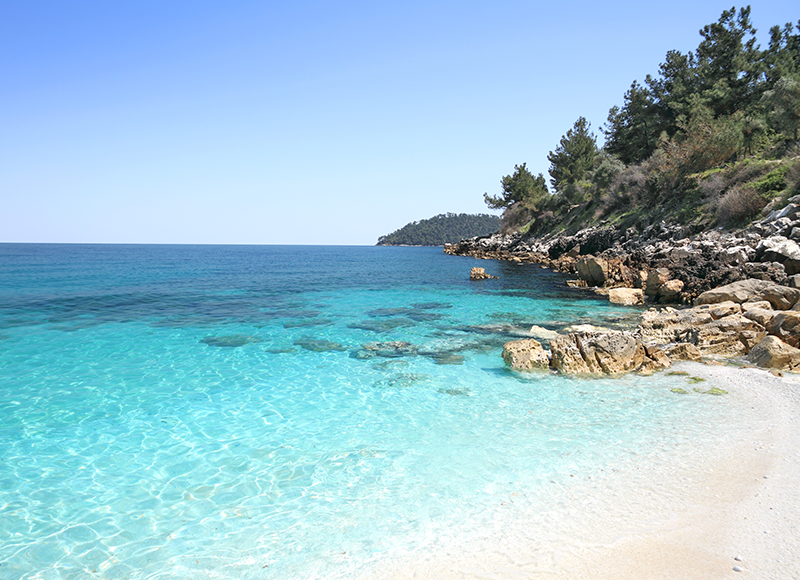Macedonia and Thrace are two historical and culturally rich regions of northern Greece. Both regions have a diverse range of attractions for visitors, including ancient ruins, beautiful landscapes, and delectable food.
The ancient city of Aigai, which served as the capital of the Macedonian monarchy under Alexander the Great, is one of the most important historical sites in Macedonia. The city, which was found in the nineteenth century, is now a UNESCO World Heritage Site. Visitors can tour the ancient ruins, which include the palace of the Macedonian monarchs, and learn about the region’s history.
The land of Alexander the Great, Macedonia, spreads from Grevena and Kastoria to Kavala and Serres. The exotic beaches of Halkidiki, the ancient Gods’ whispers at Mount Olympus, the religious traditions of Mount Athos, and the relaxed lifestyle of Thessaloniki are being unveiled. Are you ready to explore?
Thrace is the easternmost part of Greece. Here, a charming blend of cultures, fascinating activities in nature, and picturesque cities are there to amaze you. Discover Komotini, the old town of Xanthi and Alexandroupoli, experience bird-watching at the Evros Delta and Lake Vistonida, and visit the archaeological site of Abdera.

Another important historical site in Macedonia is the city of Thessaloniki, which was founded in 315 BC. The city was an important center of the Roman and Byzantine Empires and has a rich cultural heritage. Visitors can explore the city’s many attractions, including the White Tower, the Archaeological Museum, and the Byzantine churches of the city.
In addition to its historical sites, Macedonia is also known for its beautiful landscapes. The region has many national parks and protected areas, including the Prespa Lakes National Park, which is home to a wide range of wildlife, including rare bird species. Visitors can hike in the national parks, go birdwatching, or simply enjoy the stunning views.

Thrace is another region in northern Greece that has a rich cultural heritage. The region is home to many important ancient sites, including the city of Philippi, which was founded by Philip II of Macedon in the 4th century BC. The city played an important role in the Roman Empire and was the site of the famous Battle of Philippi in 42 BC. Visitors can explore the ancient ruins, including the Roman theater and the early Christian basilicas.
Another important historical site in Thrace is the city of Xanthi, which has a unique blend of Ottoman and Greek architecture. The city’s old town is a maze of narrow streets and beautiful buildings that reflect the city’s cultural heritage. Visitors can explore the city’s many attractions, including the Folklore Museum and the Turkish Quarter.
Thrace is also known for its delicious food, which is a blend of Greek and Ottoman cuisines. The region is famous for its meat dishes, including lamb, pork, and beef, as well as its cheeses and pastries. Visitors can enjoy a range of local specialties, including kebabs, moussaka, and baklava.

In conclusion, Macedonia and Thrace are two regions in northern Greece that offer visitors a rich cultural and historical experience. From the ancient ruins of Aigai and Philippi to the beautiful landscapes of the national parks, there is something for everyone in these two regions. Whether you are interested in history, culture, or outdoor activities, Macedonia and Thrace have it all. Contact Mideast today to plan your next trip to Macedonia and Thrace.
Macedonia and Thrace are two regions in northern Greece that offer a rich blend of history, culture, and natural beauty. These regions are home to picturesque landscapes, ancient archaeological sites, vibrant cities, and charming traditional villages. Here’s an overview of Macedonia and Thrace, highlighting their key features and attractions.
Macedonia, the birthplace of Alexander the Great, boasts a captivating history and is known for its archaeological treasures. Thessaloniki, the region’s largest city, is a bustling metropolis with a vibrant cultural scene. Explore the White Tower, visit the Archaeological Museum of Thessaloniki, and stroll along Aristotelous Square, lined with shops and cafes. Don’t miss the opportunity to savor delicious local cuisine and experience the lively nightlife in the city.
In Pella, the ancient capital of Macedonia, you can visit the archaeological site and discover the remains of the palace of Alexander the Great’s father, King Philip II. Nearby, Vergina is home to the Royal Tombs of the Macedonian Kings, a UNESCO World Heritage Site. Marvel at the intricate frescoes and artifacts that provide insights into the ancient Macedonian civilization.
The region of Thrace offers a mix of natural beauty and cultural heritage. Visit the city of Komotini, known for its Ottoman architecture, lively atmosphere, and vibrant markets. Explore the archaeological site of Philippi, an ancient city with well-preserved ruins, including a theater and an early Christian basilica.
For nature lovers, the Nestos River, with its stunning gorge and lush vegetation, offers opportunities for hiking, birdwatching, and rafting. The Dadia Forest Reserve is home to rare bird species, including the impressive European black vulture.
In the traditional village of Xanthi, you can wander through its charming streets, admire the well-preserved Ottoman houses, and visit the Folklore Museum. Experience the lively Xanthi Carnival, one of the largest and most vibrant carnivals in Greece, known for its colorful costumes and traditional celebrations.
The region of Thrace is also known for its excellent wine production. Visit the vineyards and wineries of the Wine Routes of Thrace and indulge in wine tastings, learning about the local wine-making traditions and sampling the diverse varietals.
Essentials
We’re here to take you there
 Currency
Currency
Euro
 Capital City
Capital City
Thessaloniki
 Winter avg temp
Winter avg temp
10°C
 Language
Language
Greek
 Summer avg temp
Summer avg temp
25°C
 Cheers
Cheers
Ya mas
 Time Zone
Time Zone
GMT+3
 Thank You
Thank You
Efcharisto

Both Macedonia and Thrace offer a wide range of cultural events, festivals, and celebrations throughout the year. From music festivals and theater performances to religious processions and traditional dances, these regions provide ample opportunities to immerse yourself in the local traditions and customs.

1
Explore Thessaloniki
Immerse yourself in the vibrant atmosphere of Thessaloniki, the region’s largest city. Visit iconic landmarks such as the White Tower, Rotunda, and Arch of Galerius. Explore the Archaeological Museum of Thessaloniki to learn about the region’s rich history.
2
Visit the Royal Tombs of Vergina
Discover the archaeological site of Vergina, where the royal tombs of ancient Macedonian kings were discovered. Marvel at the beautifully preserved artifacts and intricate frescoes that offer a glimpse into Macedonia’s ancient past.
3
Explore Philippi
Step back in time at the ancient city of Philippi, a UNESCO World Heritage Site. Explore the archaeological site, including the well-preserved theater, Roman forum, and early Christian basilicas.
4
Visit Pella
Explore the ancient capital of Macedonia, Pella, and discover the archaeological site. Admire the ruins of the palace and other structures that date back to the reign of Alexander the Great’s father, King Philip II.
5
Explore the Nestos River Gorge
Embark on an adventure through the breathtaking Nestos River Gorge. Hike along its trails, go birdwatching, or try rafting and kayaking for an adrenaline-filled experience in the midst of stunning natural beauty.